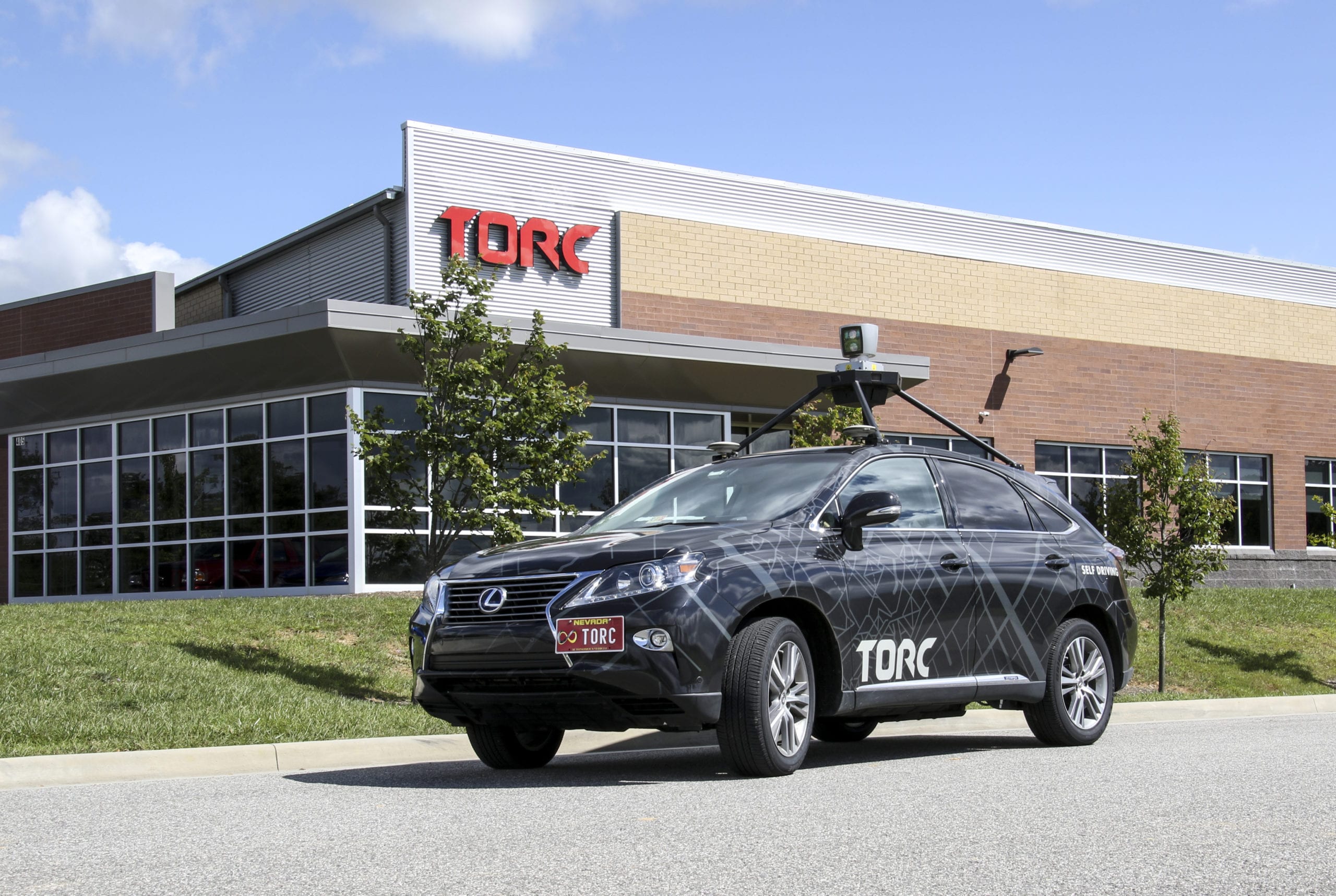Written in 2017, this article offers insight into the at-the-time challenges of achieving a commercially viable, Level 3 autonomous vehicle. Since then, Torc has shifted its focus towards creating a Level 4 automated semi-truck: a long-haul, freight focused vehicle that will revolutionize the way we move goods. For more information about our latest outlook, visit our technology section.
In 2017, we completed a cross-country trip from Washington, D.C. to Seattle in a Torc self-driving car. Along the way, one of the most frequent comments we heard from weary travelers around us was, “I can’t wait until I can take a nap while my car does the driving.”
Many self-driving car companies are working toward that day when people can completely disconnect from the driving process, but they disagree about how to make it happen safely. Some companies are taking a step-by-step approach, gradually implementing autonomous features like adaptive cruise control and object avoidance. Others argue that any driverless vehicle operating on public roads shouldn’t rely on human intervention at all. Many question if self-driving cars are the future at all.
The SAE Levels of Driving Automation classify vehicle autonomy from 0 (completely manual) to 5 (fully autonomous). A car capable of Level 3 autonomy would be able to drive itself most of the time but would require a person to take over in road or traffic situations that the car couldn’t handle. This would mean that you, the driver, would need to pay enough attention during travel to quickly take control if/when things go wrong.
A car equipped with Level 4 autonomy handles all aspects of driving and does not rely on a person to intervene. This is the level where a person could finally take a nap in a self-driving car. Several challenges must be overcome, however, before Level 3 and 4 self-driving cars become available for mass public use. For Level 3, it’s the human factor.
Level 3 Autonomy Challenges
Distraction latency
Imagine that you’ve been relaxing in a self-driving car for a two-hour drive down the highway. The car is performing well, allowing you to distract yourself with music, text messaging, and preparing for arrival. Suddenly, you come upon a construction zone that the car cannot handle. Would you be able to respond quickly enough when the car gives you the alert to take over?
A recent study by AAA Foundation for Traffic Safety discovered that participants took an average of 27 seconds to fully engage in a driving task after they had been distracted. In 27 seconds, a car going 65mph travels 2,573 feet, or the length of more than seven football fields. A lot can happen in that time.
Safety
When people have been disconnected from driving for a longer period of time, they may overreact when suddenly taking control in an emergency situation. They may overcorrect steering, brake too hard, or be unable to respond correctly because they hadn’t been paying attention.
Several design solutions could improve how cars alert humans to take control. For example, audible alarms paired with lights and tactical alerts on the seat or steering wheel could reinforce the warning and ensure the driver has enough time to respond. The most effective solution, however, may actually lie outside of the car itself.
Connected Vehicles – the solution?
The solutions for safe Level 3 and Level 4 autonomy may involve connecting cars with other vehicles and infrastructure so that they constantly communicate with each other. If cars and traffic-control devices can receive constant updates over an encrypted wireless connection, then another failsafe would be in place. Traffic lights could predict oncoming traffic from miles away, and cars could be alerted to hazards up ahead from vehicles much closer to the scene.
Cities like Columbus, Ohio, and San Diego, California, are reshaping their transportation systems to incorporate new technology and prepare for the future of transport. San Diego is deploying smart streetlights for optimizing traffic, and Columbus won the first U.S. Department of Transportation Smart City Challenge.
U.S. Transportation Secretary Anthony Foxx said, “The Smart City Challenge required each city to think about transportation as cross-functional, not in silos, but as a transportation ecosystem.”
Torc has demonstrated connected cars, participating in a successful five-vehicle platoon test in 2015 with the Federal Highway Administration (FHWA)’s Saxton Transportation Operations Laboratory. As we continue developing our self-driving technology for consumer cars, we are committed to working with other companies and government organizations to integrate it in the safest way possible.
Torc founder Michael Fleming has said he thinks connected vehicle technology is the missing link that will both make Level 3 autonomy a viable option for mass use, and be the catalyst for allowing Level 4 vehicles to perform at their full potential.
“A big challenge for self-driving cars is the ability to predict what other cars will do next,” Fleming said. “The solution is not just more self-driving vehicles on the road, but also more self-driving vehicles that are connected.”
This connection could ease the risks associated with a Level 3 car by enabling it to give the driver more time to take over before an incident. In Level 4 automated cars, connectivity could provide another level of information to allow vehicles to operate safely in a myriad of situations, without having to ask for help from a human driver.
There are inevitable challenges ahead as we all work toward a safer, easier way to get from point A to B. Preparing the road for autonomous vehicles, however, may be just as important as preparing autonomous vehicles for the road.

